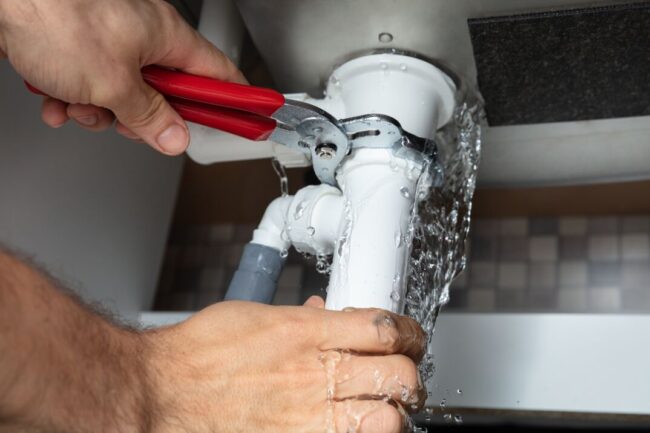
Your home can become a disaster zone in minutes due to roof leaks, flooding, or burst pipes. In such cases, prompt action is crucial. However, many homeowners make expensive mistakes in their haste to fix things, resulting in more damage, higher bills, and even health risks.
Here are the seven most common mistakes people make when restoring water damage, along with tips on how to avoid them.
Mistake #1: Waiting Too Long to Start Cleanup
The most common error made by homeowners is to put off cleaning. When it comes to water damage, every hour matters. Waiting may result in:
- Mold develops in a day or two
- decaying wood and weakened constructions
- Increased expenses for repairs
How to Avoid It:
Take immediate action. Turn off the water supply, drain any remaining water, and quickly dry the area. If the damage is severe, call a reputable restoration company immediately.
Mistake #2: Ignoring Hidden Water
Many believe that eliminating visible water is sufficient. Unfortunately, water seeps into walls, flooring, and even ceilings. Hidden moisture can:
- Induce the growth of mold behind walls
- Damage electrical systems
- putting your home’s structural integrity at risk
How to Avoid It:
To find hidden water, use moisture detection equipment or employ experts with thermal imaging cameras. You may lose money later if you neglect this step.
Mistake #3: Using the Wrong Drying Methods
It may seem sufficient to place a few fans and open the windows, but this is frequently insufficient. Standard fans cannot remove deep moisture from hardwood floors, insulation, or carpets.
How to Avoid It:
Invest in high-powered fans and dehumidifiers or rent industrial-grade equipment. The equipment used by professional restoration services can completely dry your house, avoiding mold growth and structural problems.
Mistake #4: Throwing Away Wet Items Too Soon
Some homeowners panic and discard everything that got wet, including furniture and potentially salvageable personal belongings. Others hold onto things that should be thrown away, such as mold- and bacteria-contaminated carpeting.
How to Avoid It:
Evaluate each item carefully:
- Metal objects, solid wood furniture, and some electronics are salvageable (after being properly cleaned and dried).
- Wet drywall or insulation, mattresses, and cushions are not salvageable.
When in doubt, consult a restoration specialist before discarding priceless possessions.
Mistake #5: Skipping Professional Help
Although doing it yourself could seem cheaper, water damage restoration is dangerous and complicated. Missing concealed moisture or improperly disinfecting could lead to serious problems later on, such as toxic mold or structural collapse.
How to Avoid It:
If the water damage is extensive or contaminated, contact a reputable restoration company. They have the expertise, tools, and training necessary to guarantee the complete restoration and safety of your house.
Mistake #6: Forgetting About Mold Prevention
Even after cleaning is finished, many homeowners fail to take preventative action against mold. Mold spores thrive in damp environments, and once mold starts spreading, removal becomes costly and hazardous.
How to Avoid It:
- Before beginning repairs, make sure everything has dried completely.
- Apply antimicrobial treatments to the surfaces that are impacted.
- After restoration, keep an eye on your home’s humidity levels for a few weeks.
Mistake #7: Not Documenting the Damage for Insurance
Skipping documentation is a big financial mistake. Your insurance claim might be rejected or postponed if you don’t have evidence of damage.
How to Avoid It:
- Prior to cleaning up, take pictures and videos of every impacted area.
- Maintain records of all repairs, leases, and expert services.
- To begin the claims procedure, get in touch with your insurance provider as soon as you can.
Pro Tip: Prevention Is Key
The majority of water damage problems can be prevented with routine upkeep:
- Check for leaks in hoses and pipes.
- Gutter and downspout cleaning
- See if any shingles are missing from your roof.
- Put in a sump pump where flooding is likely to occur.
Final Thoughts
The goal of water damage restoration is to do it correctly, not just to dry things out. You can save time, money, and stress by avoiding these typical blunders. When in doubt, rely on a skilled water damage restoration business to complete the task in a safe and efficient manner.
FAQs
1. Can I handle water damage on my own?
Minor leaks, yes. But for major flooding or contaminated water, always hire a professional.
2. How fast can mold grow after water damage?
Mold can start within 24–48 hours, so immediate drying is critical.
3. Will insurance cover my mistakes during restoration?
Usually not. Most policies cover the initial damage but won’t cover secondary damage caused by improper restoration.
4. What’s the biggest mistake to avoid after water damage?
Delaying cleanup. Quick action reduces costs, prevents mold, and saves your belongings.
5. How do I know if hidden water is still present?
Look for musty odors, peeling paint, or damp spots. For certainty, use a moisture meter or hire a pro.
